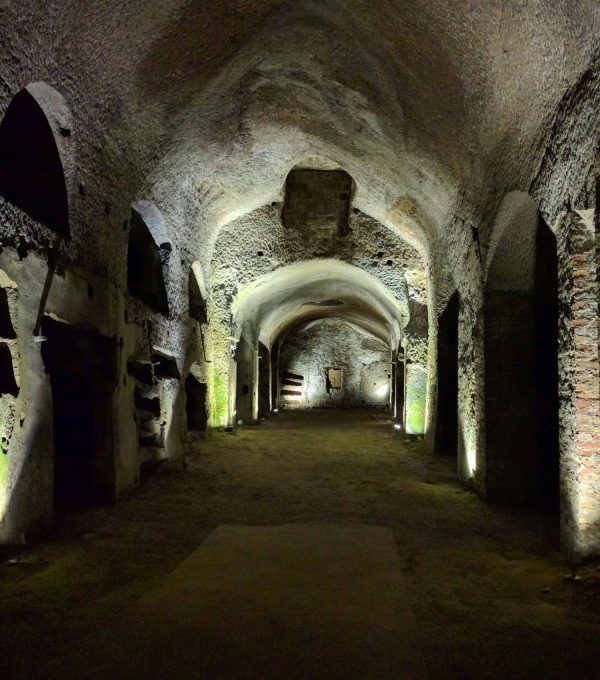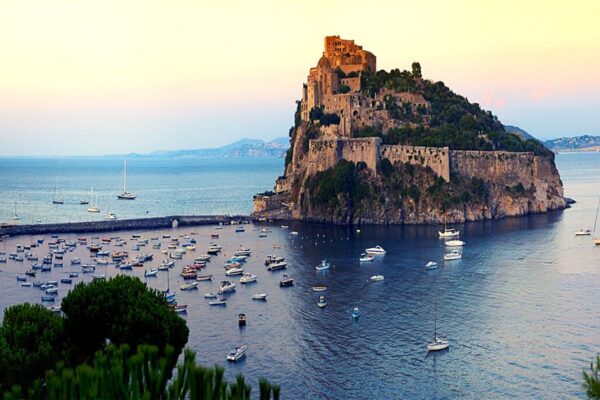Immersed in the fertile plain of Campania, between Salerno and the Amalfi Coast, stands one of the most fascinating archaeological gems of Italy: Paestum.
Formerly known as Poseidonia in honor of Poseidon, the Greek god of the seas, it is famous for its impressive Doric temples, its millennial history and its magical atmosphere that fascinates and enchants visitors from all over the world.
What to see in Paestum
The temples and monuments of Paestum constitute one of the most important and best preserved archaeological sites of ancient Magna Grecia, and Paestum is entirely to visit and admire. It is most famous for its three majestic Doric temples, which are among the best examples of ancient Greek architecture in the Mediterranean.
In addition, it is almost a must to visit the famous National Archaeological Museum of Paestum, built in the 50s inside the Greek city walls, after seeing the temples and monuments.
Discover the temples and monuments of Paestum not to be missed:
- Temple of Hera, erroneously known as Basilica, is one of the most important and ancient religious buildings of Paestum. Built around 560 BC, the temple is characterized by its elegant simplicity and harmonious proportions. Although slightly smaller than the Temple of Neptune, the Temple of Hera retains an important part of its original structure, including some of the stems of the columns and the base
It is an enneastyle peritherous temple, that is, with nine columns on the facade and on the back, unfortunately the upper entablatures and the masonry structures of the naos have been lost, that is the innermost part of a temple, typically Greek or Roman.
Its size is remarkable, although smaller than the Temple of Neptune.
Its measures are: meters 24,50 x 54,24 and the temple is oriented towards the east as the nearby temple of Neptune, together with which determines the grandiose monumental aspect of the southern sanctuary of Poseidonia. The columns are of Doric type and are 6.48 meters high.
- Temple of Neptune (or Poseidon) is the largest and best preserved of the temples of Paestum. Built around 450 BC, the temple has a plan of about 31 meters by 63 meters and has six columns on the short side and fourteen on the long side. The Doric style columns stand majestic and imposing, creating an atmosphere of grandeur and solemnity. Inside the temple, archaeologists have found remains of altars and traces of religious practices of antiquity.
- Temple of Ceres, (or of Athena) dedicated to the Greek goddess of fertility and agriculture was built around 500 BC, the temple is characterized by a narrower arrangement of columns than the other temples of Paestum. Although partially in ruins, the Temple of Ceres still retains an imposing presence and is an important example of Doric architecture.
- Urban Walls In addition to temples, Paestum also retains remains of its ancient urban walls, which surrounded and protected the city from enemy attack. The walls, built in different eras, testify to the strategic importance of Paestum during antiquity and offer a subsequent understanding of the daily life of the city
The Roman part of Paestum includes the Forum, adapted on the previous Greek agora, and the Italic Temple. The Forum of Paestum is one of the oldest and most interesting rectangular holes of the Roman era. The square is surrounded by a portico with Doric columns, while the elements of the entablature have almost completely disappeared. The Forum had around it a series of public buildings and numerous shops. The Italic Temple is located on the north side of the Forum, probably was the Capitolium of the Roman city. It is a hexastyle temple (six front columns) on a high podium, preceded by a large staircase with a simple rectangular altar.
- Painted tombs are a series of frescoed tombs in the vicinity of Paestum. These tombs dating back to the Lucan and Roman periods, have frescoes depicting scenes of daily life, funeral rituals and scenes of Greek mythology, offering valuable evidence of the culture and religion of the ancient city.
Finally, the National Archaeological Museum of Paestum is the natural continuation of the archaeological tourist visit.
The Museum collects an important collection of finds found in the areas surrounding Paestum, first of all the funeral kits from the Greek and Lucan necropolis.
There are many vases, weapons and tombstones frescoed, the most famous come from the famous Tomb of the Diver, the only example of Greek painting of classical age in Magna Graecia. In the Museum there is a clay statue of Zeus from the mid-sixth century B.C. and the metopes from the Heraion del Sele, whose remains to be admired are just outside Paestum, near the mouth of the river Sele
In 1998, Paestum was declared a World Heritage Site by UNESCO, recognition of its historical, artistic and cultural importance in the world. Its ancient ruins, the painted tombs, the artifacts preserved in the Archaeological Museum, provide valuable information on everyday life, religious beliefs and the art of ancient Magna Grecia and Imperial Rome.

Foto : Unsplash
Brief history of the ancient Paestum
Founded around 600 B.C. with the name of Poseidonia by Greek settlers from the city of Sybaris, (the present Sibari in Calabria) Paestum quickly became one of the most important centers, both from a commercial and cultural point of view, of Magna Grecia.
The choice of the site for the foundation of Poseidonia was not accidental. The strategic location, located between the mountains and the Tyrrhenian Sea, offered not only rich and fertile land, but above all water in abundance thanks to the river Sele.
In addition, the Greek colony of Poseidonia also had easy access to maritime trade with other Greek colonies and surrounding regions.
The city then became an important center of agricultural production and trade, thanks to its production of wheat, olive oil and wine. The wealth accumulated allowed the construction of imposing structures, in particular the majestic Doric temples that still dominate the archaeological landscape of Paestum.
The temples, including the Temple of Hera (Basilica), the Temple of Poseidon (Neptune) and the Temple of Ceres, are superb examples of ancient Greek architecture. Built with impressive marble columns and sculptural decorations, these religious buildings bore witness to the fervent devotion of the citizens of Poseidonia to the Olympic deities
The arts, literature, philosophy and sciences flourished, attracting thinkers, artists and philosophers from all over Magna Graecia, contributing to Paestum’s reputation as one of the most important cultural centers of antiquity.
However, Greek domination at Paestum was not immune to conflict and turmoil. Rivalry with other Greek cities of Magna Graecia, such as Sybaris and Taranto, and raids by indigenous peoples and other foreign powers, created tensions and conflicts that had an impact on the political and social stability of Poseidonia.
In fact, during the fourth century BC, Magna Grecia, including Paestum, was the scene of conflicts and rivalries between the Greek cities and the indigenous peoples of the region, including the Lucani.
The Lucani, conquered the city, changed the name of Poseidonia in Paistom and their hegemony, which can be placed between 420 and 410 BC, represents a significant period in the history of Paestum. The Lucani were an ancient people who inhabited the area of present-day Basilicata and parts of southern Campania during antiquity.
The duration of Lucanian supremacy over Paestum is an integral part of the complex history of southern Italy during antiquity.
After the Lucani, the Roman rule over Paestum represents another important chapter in the history of the ancient city of Magna Grecia.
Paestum, founded as Poseidonia by Greek settlers in the sixth century BC, changed its name again, from Paistom became Paestum and was an integral part of the Roman Empire in the third century B.C. after the Roman conquest of the Campania region
Under the Roman colonization, Paestum underwent remarkable transformations both politically and culturally. The city, always favored by its strategic position along the Tyrrhenian coast, became again an important commercial and agricultural center within the Roman Empire. The Romans introduced new infrastructure, roads, public buildings and an administrative system that reflected their influence and authority over the region.
The Greek temples of Paestum, which had been built by Greek settlers, were adapted and converted for Roman use. Some buildings were transformed into places of worship of the Roman religion or administrative structures, while others underwent structural changes to adapt to the needs of citizens who became subjects of Rome.
The arrival of the Romans also brought about a cultural change in Paestum’s society. Although Greek influence was still predominant in many aspects of city life, the Romans introduced their language, laws, and institutions, contributing to the Romanization of the city and the region.
Under Rome, Paestum continued to have good economic prosperity and political stability. Agriculture, trade, and crafts flourished, and the city again became an important center of olive oil and wine production, exported throughout the Roman Empire.
However, with the decline of the Roman Empire in the 5th century AD, Paestum underwent a slow decay. Barbarian invasions and Saracen raids led to the destruction and abandonment of many Roman cities, including Paestum, which fell into disrepair and was largely abandoned.
Despite the decline, the Roman heritage at Paestum is still visible today in the remains, artifacts and archaeological structures that testify to the importance and influence of Rome on the ancient Greek city. Roman domination is therefore an essential part of the rich and complex history of Paestum and its evolution over the centuries.

Foto : Unsplash
How to reach Paestum
Paestum is located in the province of Salerno, and is a fraction of the town of Capaccio Paestum.
It is accessible by car, plane and train.
By car follow the signs.
By train you can reach the railway stations of Salerno or Battipaglia, which are the main stops of the Naples – Reggio Calabria line, then take one of the many local trains that pass through the railway stations of Capaccio-Paestum.
To reach the archaeological area of Paestum, once you get off at the train station, you need to follow the road signs and walk for about 700 meters on foot, fifteen minutes on foot.
To visit the Archaeological Park of Paestum and the Archaeological Museum you must buy the entrance ticket at the Museum or at the ticket office of Porta Principale, in front of the Temple of Neptune.
For guided tours with experienced staff, please contact on site or online.
Copertina: Unsplash



